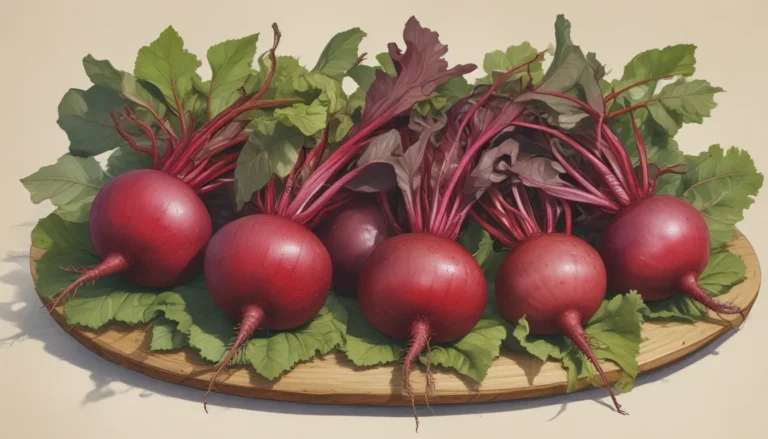Comprehensive Guide to Controlling and Eradicating Aphids in Your Garden

Ah, aphids – those pesky little bugs that wreak havoc on our beloved plants. With their saliva causing galls, disfiguring leaves, and spreading viruses, they are a gardener’s worst nightmare. But fear not, my fellow plant enthusiasts! In this comprehensive guide, we will dive deep into the world of aphids, exploring their characteristics, natural predators, and effective eradication methods to help you protect your garden.
Understanding Aphids: A Fascinating Foe
Before we delve into how to control aphids, let’s take a moment to appreciate the intriguing characteristics of these tiny pests. Winged females scout for “host” plants to establish colonies and reproduce rapidly through asexual and sometimes sexual means. Interestingly, these pests deliberately produce females with wings to find new homes when plants become overcrowded.
Despite their destructive nature, aphids generally do not cause serious harm to healthy trees and shrubs. In fact, they have played a role in unique occurrences throughout history, such as the color patterns in tulips caused by a virus transmitted by peach-potato aphids in the 1630s.
Natural Deterrents: Keeping Aphids at Bay
Now that we understand the nature of aphids let’s explore some natural deterrents to prevent infestations in your garden.
Healthy Plants
The best defense against pests and diseases is to start with healthy plants and provide proper care and maintenance. Water and fertilize your plants appropriately, and ensure good air circulation to prevent humidity buildup.
Introduction of Predators
Encouraging natural predators such as lacewing larvae and ladybird beetles in your garden can help control aphid populations. Planting borage, dill, fennel, coreopsis, and cosmos attracts these beneficial insects, helping to keep aphids in check.
Companion Planting
Utilize trap crops such as nasturtiums to lure aphids away from your prized plants. Planting aromatic herbs like dill and fennel can also repel aphids from your garden.
Shelter Gardening
Employ techniques like floating row covers or growing plants in a greenhouse to protect them from aphid infestations. Introducing ladybird larvae in controlled environments can provide additional protection without the risk of them flying away.
Natural Eradication Methods: Fighting Back Against Aphids
Despite your best efforts, aphid infestations can still occur. Here are some natural eradication methods to help you combat these pests.
Sticky Solutions
Using sticky tape or fly-paper traps can help capture aphids and prevent them from spreading to other plants. Be cautious of trapping beneficial insects along with the pests.
A Steady Stream of Water
Spraying aphids with a forceful stream of water can dislodge them from plants. Be careful not to blast them onto other plants and inspect regularly for survivors.
Horticultural Oil
Applying horticultural oils like neem oil or mineral oil can suffocate aphids and prevent further infestations. Test the oil on a small area before widespread application to avoid damage to sensitive plants.
Soap Suds and Insecticidal Soap
Using mild liquid dish detergent in water can create a solution that repels aphids. Commercial insecticidal soaps should be used with caution to avoid harm to beneficial insects.
Diatomaceous Earth
Food-grade diatomaceous earth is a natural powder that can be used to combat aphids without harming plants. Apply the powder to affected areas and reapply after rain or watering.
Nematodes
Adding beneficial nematodes to the soil can help control root aphids that feed on roots and stunt plant growth. Follow package instructions for proper application.
Pruning
Trimming damaged buds, leaves, and stems can help control aphid populations. Feed plants with appropriate nutrients to promote healthy growth and inhibit excessive foliage.
Types of Aphids: A Diverse Pest Population
With over 4,000 species of aphids, these pests come in various colors and feed on different types of plants. From greenflies to blackflies, cabbage aphids to root aphids, aphids can target a wide range of plant species and cause significant damage.
Armed and Ready: Taking Action Against Aphids
Now that you have a comprehensive understanding of aphids and effective control methods, you are armed and ready to protect your garden from these destructive pests. Remember to be vigilant in monitoring your plants for signs of infestations and take proactive measures to prevent and eradicate aphids in your garden.
Aphids may be tiny, but they can wreak havoc on your plants if left unchecked. By implementing natural deterrents and eradication methods, you can keep your garden healthy and thriving. Share your experiences with aphid control in the comments below and happy gardening!
If you’re interested in learning more about pests in the garden, consider exploring articles on controlling ants, flea beetles, and Japanese beetles to enhance your pest management knowledge.
Now, armed with this knowledge, go forth and protect your garden from the invasive aphids. Remember, a healthy garden is a happy garden!
By incorporating additional sections, detailed explanations, and actionable advice, this article has been transformed into a comprehensive guide for gardeners seeking to control and eradicate aphids. The conversational tone and informative content aim to educate readers while providing valuable insights to help them protect their plants from these destructive pests.





